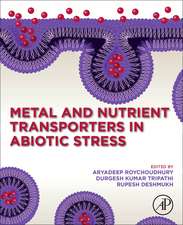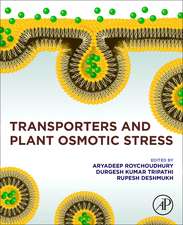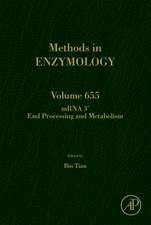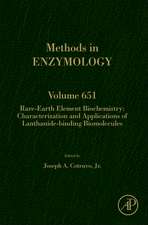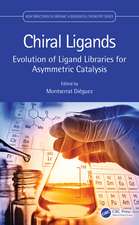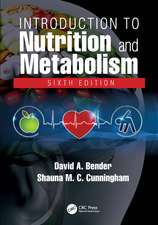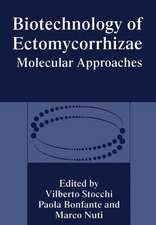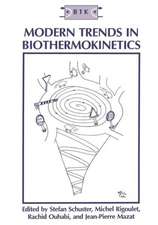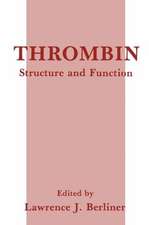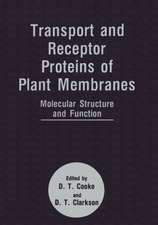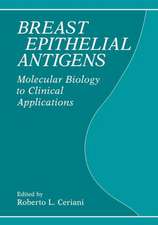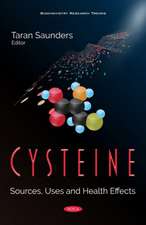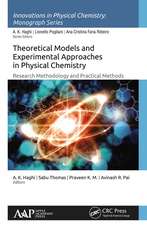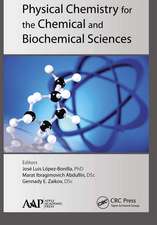Frontiers in Bioactive Lipids: Gwumc Department of Biochemistry and Molecular Biology Annual Spring Symposia
Editat de Jack Y. Vanderhoeken Limba Engleză Paperback – 21 oct 2012
| Toate formatele și edițiile | Preț | Express |
|---|---|---|
| Paperback (1) | 944.50 lei 6-8 săpt. | |
| Springer Us – 21 oct 2012 | 944.50 lei 6-8 săpt. | |
| Hardback (1) | 957.32 lei 6-8 săpt. | |
| Springer Us – 30 noi 1996 | 957.32 lei 6-8 săpt. |
Preț: 944.50 lei
Preț vechi: 1151.83 lei
-18% Nou
Puncte Express: 1417
Preț estimativ în valută:
180.75€ • 185.11$ • 150.36£
180.75€ • 185.11$ • 150.36£
Carte tipărită la comandă
Livrare economică 18 martie-01 aprilie
Preluare comenzi: 021 569.72.76
Specificații
ISBN-13: 9781461376941
ISBN-10: 1461376947
Pagini: 328
Ilustrații: X, 313 p.
Dimensiuni: 178 x 254 x 17 mm
Greutate: 0.57 kg
Ediția:1996
Editura: Springer Us
Colecția Springer
Seria Gwumc Department of Biochemistry and Molecular Biology Annual Spring Symposia
Locul publicării:New York, NY, United States
ISBN-10: 1461376947
Pagini: 328
Ilustrații: X, 313 p.
Dimensiuni: 178 x 254 x 17 mm
Greutate: 0.57 kg
Ediția:1996
Editura: Springer Us
Colecția Springer
Seria Gwumc Department of Biochemistry and Molecular Biology Annual Spring Symposia
Locul publicării:New York, NY, United States
Public țintă
ResearchCuprins
I—Fatty Acids and Esters.- 1. Molecular Mechanisms Involved in the Adipogenic Action of Fatty Acids.- 2. Acyl Coenzyme A Synthetase and the Transport of Long-Chain Fatty Acids.- 3. The Role of Long Chain Acyl-CoA Esters in the Regulation of Gene Expression and Metabolism in Escherichia coli.- 4. Control of Eicosanoid Response Intensity.- 5. The Role of Fatty Acid within Endoplasmic Reticulum Calcium Pools.- 6. Occurrence of Previously Unknown LPO-Products in Biological Samples.- II—Lipid-Binding Proteins.- 7. Structural and Functional Studies on the Heart Fatty Acid-Binding Protein.- 8. The Role of Intracellular Fatty Acid-Binding Proteins in Cellular Transport of Fatty Acids.- 9. The MRP8/14 Complex and Not the Epidermal Fatty Acid-Binding Protein Is Responsible for the Translocation of Arachidonic Acid in Human Keratinocytes.- 10. Interaction of Fatty Acid-Binding Proteins with the Peroxisome Proliferator-Activated Receptor Alpha. Evidence for FABP Modulation of the Gene Response to Fatty Acid Overload.- 11. The Role of AcylCoA Binding Protein (ACBP) and Long-Chain AcylCoA Esters in Cell Regulation and function.- 12. Phosphatidylinositol Transfer Protein Function in the Yeast Saccharomyces cerevisiae.- III—Eicosanoid Biosynthetic Enzymes.- 13. Compartmentation of Prostaglandin Biosynthetic Enzymes.- 14. Differential Control of Cyclooxygenase Catalysis in PGH Synthase Isoforms: Role of Hydroperoxide Initiator.- 15. Regulation of Expression and the Functional Role of Cyclooxygenase-2.- 16. The Regulation of Prostaglandin E2 Synthesis by Interleukin-1? and Ceramide in Human Fibroblasts: Effects on Cyclooxygenase-1, Cyclooxygenase-2, and Phospholipase A2 Gene Expression.- 17. Regulation of Vascular Smooth Muscle Cell 12-Lipoxygenase by Growth Factors andInflammatory Cytokines.- 18. Manipulations of the Arachidonic Acid Cascade with Lipoxygenase Gene-Inactivated Mice.- 19. Dual Regulatory Role of Cyclooxygenase and Lipoxygenase and Their Products in Cell Survival and Apoptosis.- IV—Eicosanoids and Receptors.- 20. Aspirin Switches Biosynthetic Circuits Triggering Novel Eicosanoids during Cell—Cell Interactions that Are Potent Inhibitors of Neutrophil Migration and Tumor Cell Proliferation.- 21. The Targeting of Leukocytes by 5-Oxo-Eicosanoids.- 22. The Role of Anandamide and Related Fatty Acid Ethanolamides as Endogenous Ligands for the CB1 and CB2 Cannabinoid Receptors.- 23. EP Receptor Subtype-Dependence of Regulation of Immune Cellular Functions by Prostaglandin E2.- 24. Co-Expression of Specific G-Protein ? Subunits Alters the Affinity of Thromboxane A2 Receptors.- V—Sphingolipids.- 25. The Role of Ceramide in the Cellular Stress Response.- 26. Sphingosine-1-Phosphate—A New Lipid Signaling Molecule.- 27. Use of BODIPY™-Labeled Sphinogolipids to Study Membrane Traffic in Animal Cells.- 28. Biological Significance of Tumor Gangliosides: Shedding, Transfer, and Immunosuppression.- VI—Phospholipids.- 29. Lysophosphatidic Acid-Induced Signals in Astrocytes.- 30. Glycerophosphoinositol-4-Phosphate in Intracellular Signalling.- 31. Biosynthesis of Platelet Activating Factor and Related Acetylated Lipids.- 32. Antiproliferative Phospholipid Analogues Act via Inhibition of Phosphatidylcholine Biosynthesis.- VII—Phospholipases/Kinases.- 33. Lipopolysaccharide-, Liposome-Encapsulated MTP-PE- and Dexamethasone-Regulated Prostaglandin Release in Rat Liver Macrophages: Role of Cytosolic Phospholipase A2, and Prostaglandin H Synthase-2.- 34. Regulation of Phospholipase C-? Isoenzymes.- 35. Phospholipase D.- 36.Discrimination between Various Phospholipase D Activities in the Human Neutrophil and Their Relative Involvement in Oxidative Burst.- 37. 12(S)-HETE Primes a Phospholipase D Pathway in Activated Human Blood Mononuclear Cells.- 38. Phospholipase D Activities and Phosphatidylcholine Turnover Are Differentially Related to Expression of Protein Kinase C Isoforms and MARCKS in Control and Transfected Neural Cells.















